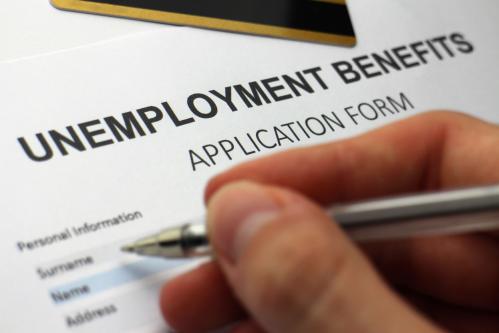This article originally appeared in Real Clear Markets on April 6, 2017.
Today the national unemployment rate stands at only 4.7 percent. Initial weekly jobless claims are about 250,000, which is as low as they have been at any point this century. But this happy state of affairs will not last forever, and when the next recession arrives, it may do so quickly and without much warning. Now is the time to improve our defenses.
The last time recession struck, unemployment rose to 10 percent as millions were thrown out of work. For those individuals and families, the Great Recession was an emergency that threatened their economic security and undermined everything they had worked towards for years prior. The first line of defense for many was unemployment insurance (UI).
In normal times, like today, and in most states, unemployment insurance provides half a year of partial income replacement for established workers who lose their jobs through no fault of their own. These benefits can prevent foreclosure and otherwise mitigate economic hardship while the recently unemployed seek new jobs. During severe economic downturns, when finding a job is much more difficult, unemployment benefits are extended beyond the usual term. This allowed workers in hard-hit states to receive up to 99 weeks of benefits, contributing to total UI spending of more than $150 billion in fiscal year 2010.
Some researchers and policymakers have reasonably worried that such generous UI could discourage serious job search and raise workers’ wage demands unrealistically (an instance of what economists call “moral hazard”), thereby slowing the overall labor market recovery. To be clear, most labor economists do not share the worry that unemployment is increased much by UI. But if we take concerns about moral hazard seriously, while also wanting to aid workers who lose their jobs and need some temporary assistance, what might we do?
Some researchers and policymakers have reasonably worried that such generous UI could discourage serious job search and raise workers’ wage demands unrealistically, thereby slowing the overall labor market recovery.
An idea put forward in 1979 by economists Shavell and Weiss could be helpful. Currently, UI benefits are paid out as a constant dollar amount every week, right up until the moment at which they expire. This makes sense in a world where the unemployed have no control over their likelihood of finding new employment. However, to the extent that the unemployed can affect this probability, perhaps by increasing the intensity of their job search or lowering their wage requirement, Shavell and Weiss suggest a different approach. Unemployment insurance benefits would be paid at a relatively high level immediately after the initial claim, and then gradually fall each subsequent week until they are eventually discontinued (or the worker finds new employment).
Crucially, the gradual decline in payments over time gives recipients some extra motivation to look seriously for work and take available offers. The incentive to “run out the clock,” waiting for UI to expire, is substantially diminished because recipients’ payments are front-loaded. Given what economists have learned about the corrosive impact of extended unemployment spells, this could be a boon for workers and the labor market alike. As an added benefit, receiving more UI upfront would aid workers who need to make expensive long-distance moves in search of new jobs.
Implementing this proposal need not require spending more (or less) on unemployment insurance than in the current system. The new UI schedule could be set up so that total expenditures at the state or national level are about the same as before, providing the average worker with similar total insurance against job loss. While the government would incur higher expenses at the beginning of a given worker’s unemployment spell, offsetting savings would be achieved later in a spell.
Unemployment insurance is one of our most important labor market institutions, and we should be continually looking for ways to improve its functioning. Introducing a downward-sloping schedule of benefits would help encourage job search while continuing to assist workers who lose their jobs through no fault of their own.







Commentary
Op-edTo improve unemployment insurance, it’s time to revisit an old idea
April 6, 2017